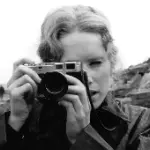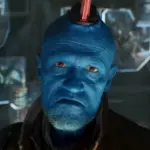Ten years ago, HBO launched "True Detective (Season 1)," written by Nic Pizzolatto and directed by Cary Joji Fukunaga. This series tells the story of two male protagonists solving cases through continuous conversations while skilfully blending cult culture, psychedelic colours, and the notion of fate, making it quite fascinating. Even during the grand finale, the HBO streaming platform's servers crashed due to an overload of users and traffic.

HBO tried to replicate the first season's success in the following years by releasing two seasons of "True Detective," each with independent characters and stories. Unfortunately, none of them could replicate the brilliant performances of Woody Harrelson and Matthew McConaughey. This year is the 10th anniversary of the airing of "True Detective," and the writer of the first season, Nic Pizzolatto, has returned. He co-wrote the fourth season of "True Detective" with director Issa López, with Jodie Foster as the producer, creating a story about two female police officers working together to solve a case.

After the series' first episode aired on January 14th, the show's reputation quickly soared. Not only did it receive an 8.9 rating on IMDb, but it also garnered a 93% freshness rating on Rotten Tomatoes. However, viewers familiar with director Issa López were sighing on the one hand, saying, "It has a bit of the first season's flavour," while worrying that the director would base her interest in politics and social issues on characters that should have been well developed and stories that should have been deeply explored.
Eight men and one woman
The Tsalal Research Station, located north of the Arctic Circle, enters a state of 24-hour darkness (also known as "polar night") from November 13th to January 29th each year. The station is home to eight male researchers from various fields who study prehistoric life and geographical features through the ice. Their only means of communication with the outside world is through a driver who supplies them with daily necessities. On the second day of polar night, the driver, who came to deliver supplies as usual, found that the eight men had disappeared without a trace, despite his calls for help. The driver, braving a blizzard, entered the research station through the kitchen back door, only to find the eight men gone.

Realizing something was wrong, the driver reported to the local police. Chief Liz Danvers (played by Jodie Foster) and a father-son police duo arrived at the scene and found many strange things. First, based on the food and clothing in the research station, it had been at least two days since anyone had lived there. Second, although the eight men had disappeared, there were no signs of struggle or resistance in the research station. Finally, they found a severed tongue on the floor of the research station. This severed tongue led to Jodie Foster's partner, played by Kali Reis as the female police officer Trooper Evangeline Navarro.

She was interested in the severed tongue because she had previously handled a case involving the murder of an Inuit indigenous woman. The victim, Annie Kowtok, was a midwife. She had protested against companies mining in the area so many times that many people disliked her, and she was eventually found dead at the entrance to a mine.
The scene was very shocking to female police officer Navarro. However, she could not solve the case because there were very few clues. Finally, because she was too persistent, she was transferred to the state police by the new Chief, Liz Danvers. Because of this severed tongue, Danvers and female police officer Navarro were tied together. However, because the clues to both cases were minimal, they were still looking for a direction for investigation.
Just then, an Inuit indigenous woman named Rose Aguineau (played by Fiona Shaw), guided by the spirits of her deceased relatives, led the police to the missing researchers. They were buried in the snow, almost naked, with only their upper bodies and heads exposed. This is the content of the first episode of the fourth season, which was previously introduced. The new story, which consists of only six episodes, will revolve around the "Tsalal case" and the "Annie Kowtok case."

Lower your expectations, and you'll be pleasantly surprised.
"True Detective (Season 4)" deliberately contrasts with "True Detective (Season 1)" in its setting.
For example, "True Detective1" had two male protagonists who were police officers solving a case of a murdered woman. "True Detective4" has two female police officers as the main characters, working together to solve a case of a murdered man (the murder of a woman is just one part of it). Also, the story of "True Detective1" took place in the southern United States, where the environment was hot and humid, giving a feeling of suffocation from the glaring sun and thick air. "True Detective4" is set in the polar night of the Arctic Circle, where there is no sunlight, only the piercing cold wind and the endless snow, giving a feeling of being trapped with no escape.
The purpose of this deliberate contrast is to highlight the role and power of women—this is also one of the main themes of "True Detective4," which means that the series is likely to serve this theme from story logic to emotional handling and core exploration.
Looking at director Issa López's resume, it's not hard to see that she has hardly any outstanding work. Even her favourite, "Tigers Are Not Afraid," which she has emphasized multiple times on different occasions, is not very exceptional, with a rating of only 6.9 on IMDb. She has transplanted the method of blending horror, fantasy, and reality she played with in "Tigers Are Not Afraid" into "True Detective4." So, the plot has many fantasy elements, such as Danvers's encounter with a car accident on the road. When she went to check the situation inside the car, she instantly returned to a car accident scene she had experienced before.

There is also the old Inuit woman Rose Aguineau, who saw the spirits of her deceased relatives while gutting a reindeer. The spirits led her into the distance the second time she saw them. Finally, they stood still, made a strange gesture, and pointed to the side, guiding Rose Aguineau to see the bodies of the eight murdered men. Another example is female police officer Navarro, who, while driving, saw a polar bear with one eye blind. After a brief encounter with it, the polar bear left directly, leaving Navarro standing in place.
These settings that break the boundaries between reality and fantasy have yet to show specific plot guidance. However, by reviewing the "Annie Kowtok case" and combining it with the identity of the deceased in the "Tsalal case," one can vaguely guess the intention of director Issa López. She wants to stand in the position of the indigenous people and accuse outsiders like researchers and miners of polluting and plundering this pure land and exposing the bloodshed and cruelty of their greed.
Director Issa López focuses on social and political issues: the outer shell is feminism, wrapped in environmental pollution and cultural colonization, and explores human greed and darkness. This approach is not wrong in today's cultural environment, emphasizing political correctness. However, for audiences tired of art being compromised by political correctness, although it is not bad, it is not to their taste. More importantly, if you have to follow this direction, it means that "True Detective4" is still deviating from the original intention of "True Detective1" to be charming. We like "True Detective1" not because of its two male protagonists, not because its victims are a group of girls, not because it exposes the greed and shamelessness of the church and corporations, but because of Matthew McConaughey's portrayal of the male protagonist Rust.

Rust is a fascinating, self-contradictory, and highly stubborn character. He is a police officer but is addicted to drugs. He hates religion but hangs a crucifix in his house. He thinks the world is a sewer but tries hard to save the people he can in the sewer. He believes humans are a chaotic mass without self-awareness but constantly emphasizes his values. He believes time is a void, meaningless, and worthless existence, but he is obsessed with a case and cannot extricate himself from the time spent on it.
The charm of "True Detective1" does not come from the bizarre cases or the evil of human nature—these can be seen in many suspense stories. What "True Detective1" offers us is Rust, who shows us how a self-exiled person holds on to his beliefs about life in a state of alienation from the world. This has nothing to do with gender and political correctness but with the complexity and contradiction of human nature. So far, "True Detective4" does not have such a protagonist.








































Share your thoughts!
Be the first to start the conversation.